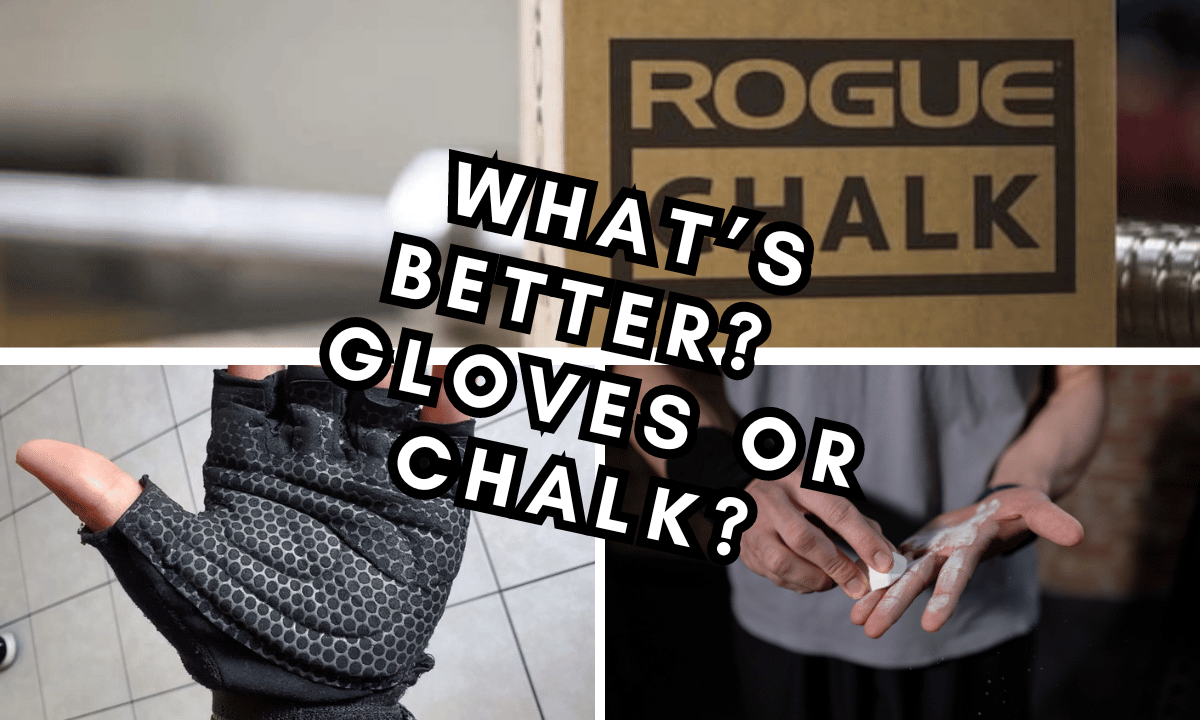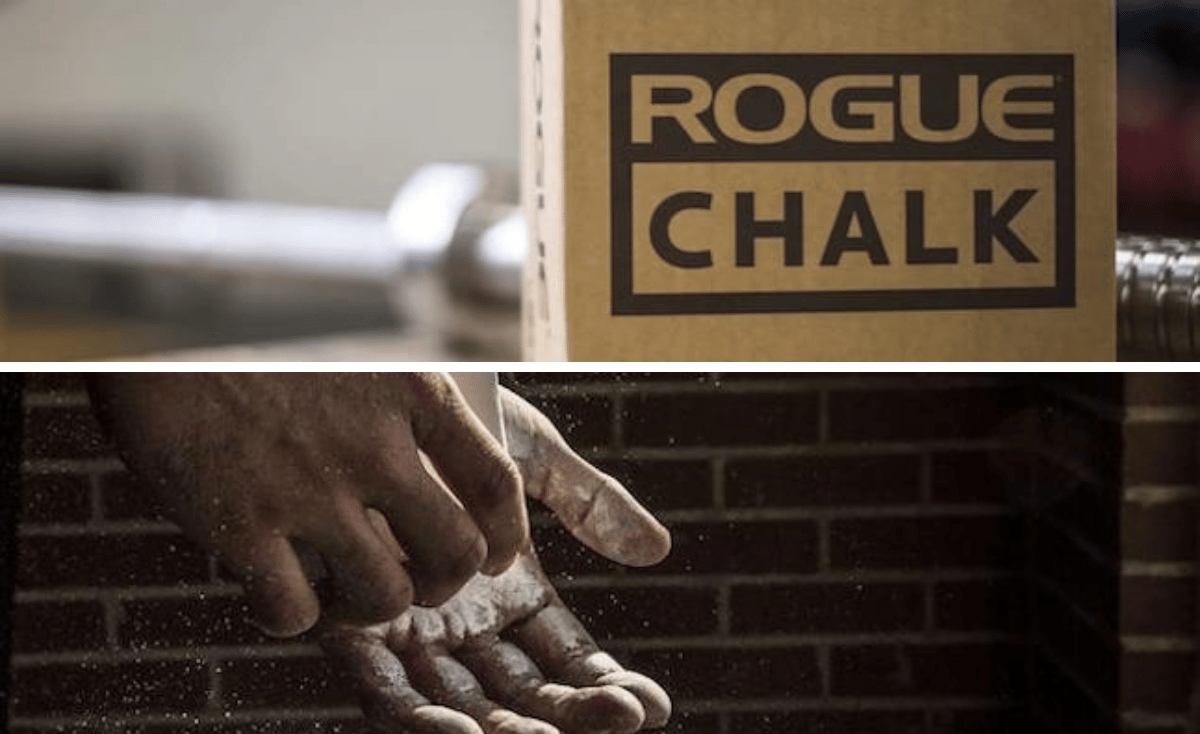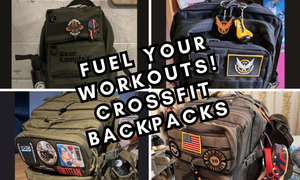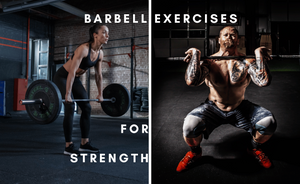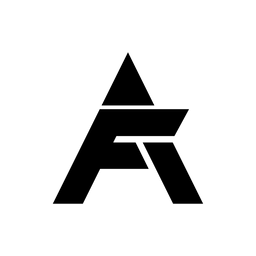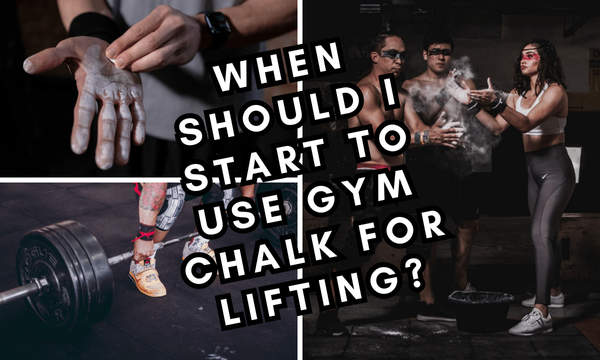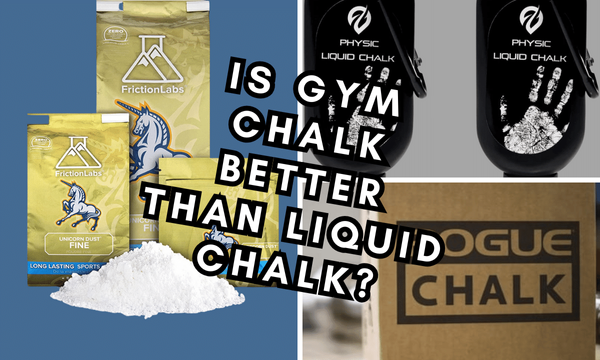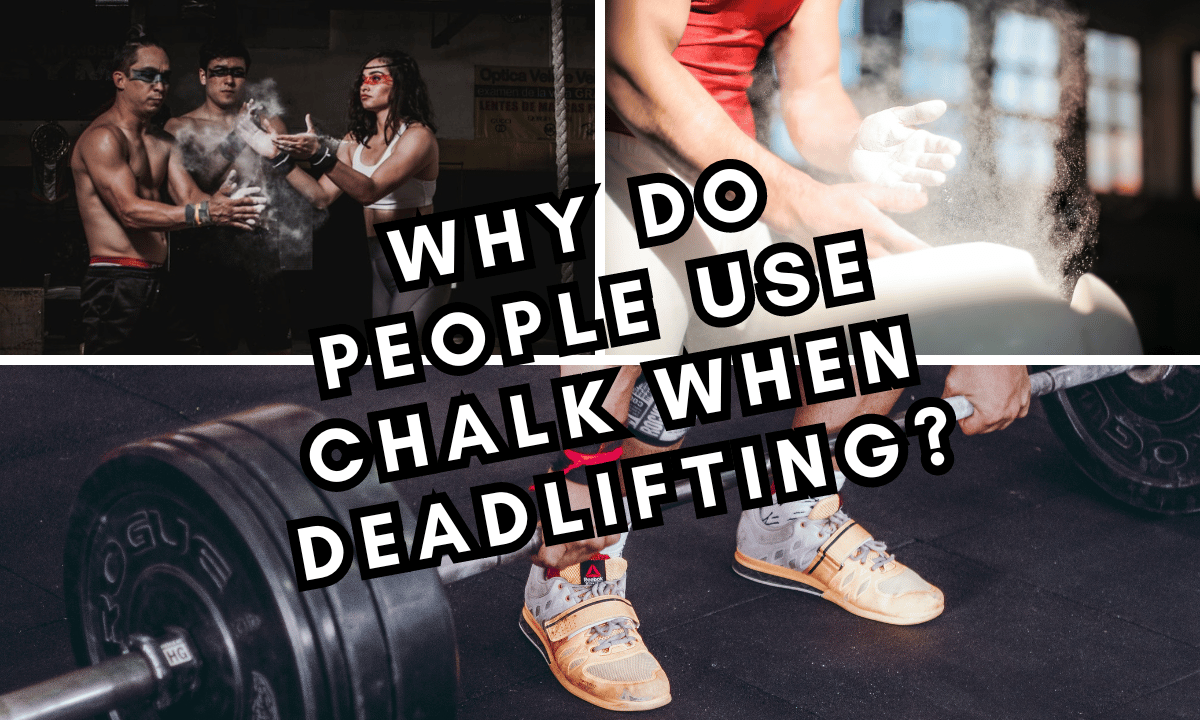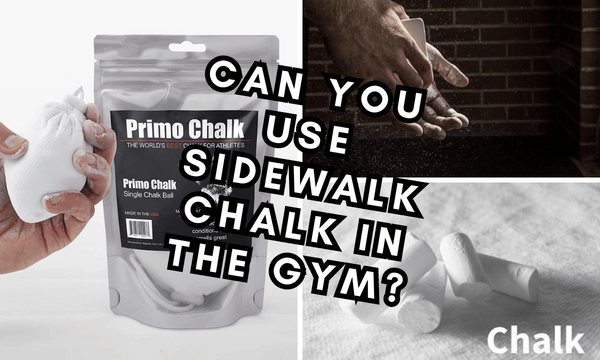Grip strength plays a crucial role in many sports and everyday activities. The use of chalk is a common method to improve grip, but does it truly enhance performance or could it hinder our natural abilities?
In this blog post, we’ll explore the impact of chalk on grip strength, specifically addressing the question: “does chalk ruin grip strength?” We will discuss the pros and cons of different types of chalk, proper application techniques, alternatives to chalk, grip training exercises, and chalk etiquette in gyms. Let’s dive in and discover the secrets to a strong and reliable grip.
Key Takeaways
- Chalk can increase grip strength, but its use should be balanced with other methods to ensure optimal benefits.
- Liquid and powdered chalk both offer advantages for improved grip, Each have their own drawbacks that need to be considered when deciding which is best suited to your needs.
- Alternatives such as weightlifting gloves and lifting straps provide an alternative way of improving grip strength without the use of chalk.
The Impact of Chalk on Grip Strength
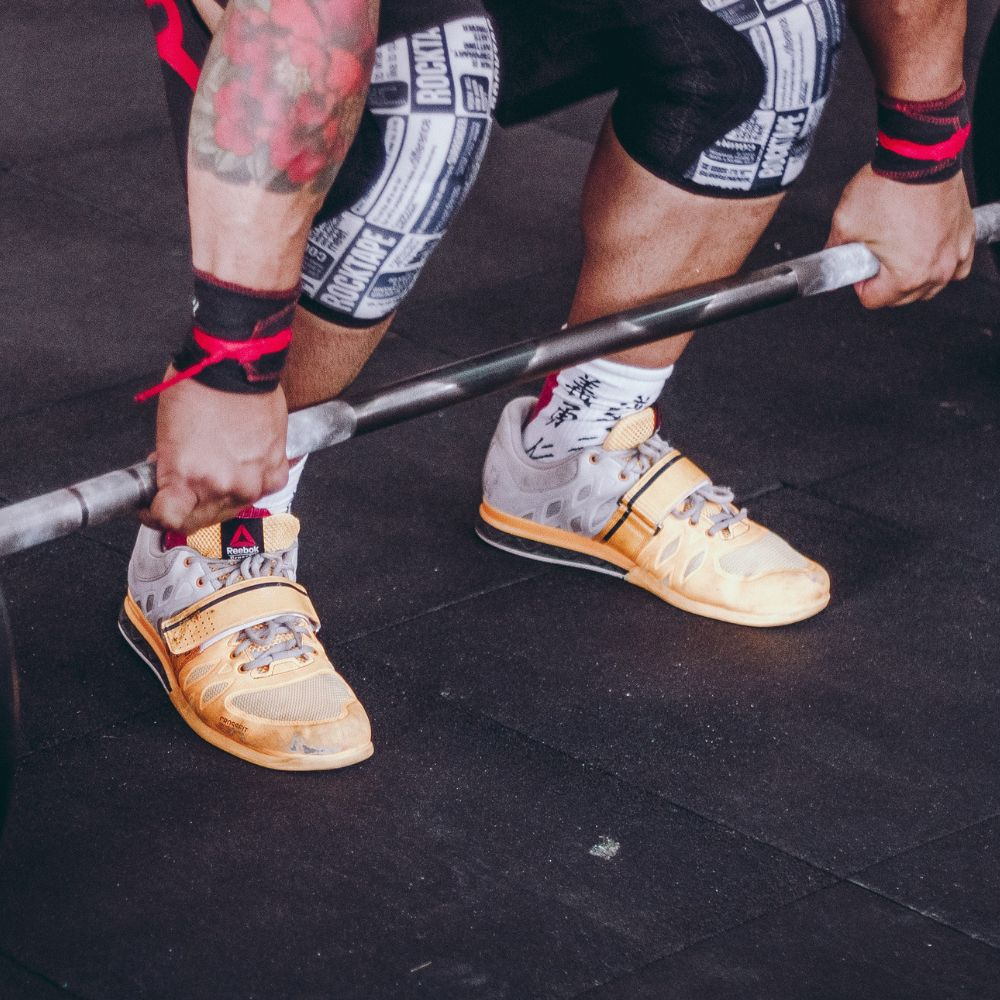
Chalk is widely used in sports like weightlifting, rock climbing, and gymnastics to improve grip strength by increasing friction and preventing sweaty hands. While chalk can indeed provide a better grip, over-reliance on it may limit our natural grip development.
Understanding the role of chalk in enhancing grip, along with its potential drawbacks and alternatives, can aid in maximizing its benefits.
Chalk's Role in Enhancing Grip
Chalk serves a vital function in grip-intensive sports and workouts by increasing traction and reducing moisture on the hands. By helping to absorb sweat, chalk provides a dry and secure grip, allowing athletes to perform at their best.
A study by Amca and colleagues found that the use of chalk increased friction between the fingers and sandstone and limestone rock types by 21.6% and 18.7%, respectively. This enhanced friction can lead to improved performance in activities like lifting and calisthenics, where a strong grip is essential.
However, bear in mind that chalk doesn’t augment our grip strength beyond our natural capacity. By providing a better grip, it allows us to utilize our inherent grip strength to maintain a firm grip on the bar, thus improving our performance.
Nevertheless, chalk is an essential tool in grip-intensive sports, and using it correctly can significantly benefit our grip strength and overall performance.
Potential Drawbacks of Chalk Use
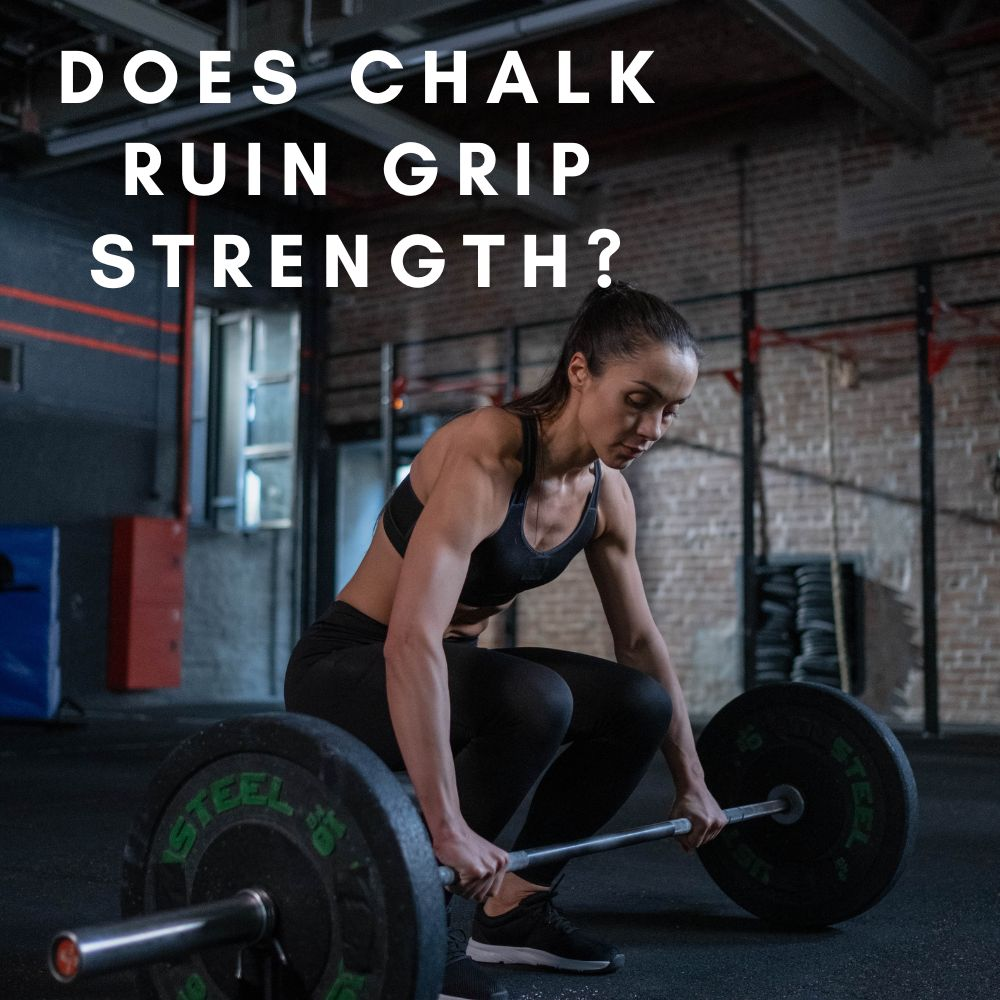
While chalk can enhance grip strength, there are potential drawbacks to its usage. Some of these include:
- Skin irritation, particularly for those with sensitive skin
- Drying out of the skin with frequent use
- Potential tearing of the skin if handled roughly
- Formation of blisters
- Excessively dry hands
- Negative effects on gym equipment and air quality due to chalk dust, which can lead to health issues for individuals with allergies or asthma.
Mitigating these potential issues requires cautious chalk application and the use of an appropriate amount for the activity. By striking the right balance, athletes can reap the benefits of enhanced grip strength without experiencing the drawbacks of excessive chalk use.
Building Grip Strength Without Chalk
Building grip strength without relying on chalk involves focusing on grip-specific exercises and proper technique. Some exercises that can effectively target grip strength and forearm mass without the use of chalk are:
- Tennis ball squeezes
- Towel chin-ups or pull-ups
- Wrist curls
- Dead hangs
- Plate pinches
- Farmer’s walks
- Grippers
- Fat Gripz biceps curls
- Dumbbell head grabs
- Reverse dumbbell curls
Grip technique can also have a substantial influence on grip strength. Different grip techniques, such as climbing-specific grip techniques or grip-focused training exercises, can increase grip strength and endurance.
By incorporating these exercises and techniques into your training routine, you can build grip strength without relying on chalk, allowing for a more natural and sustainable grip development.
Types of Chalk: Liquid vs Powdered
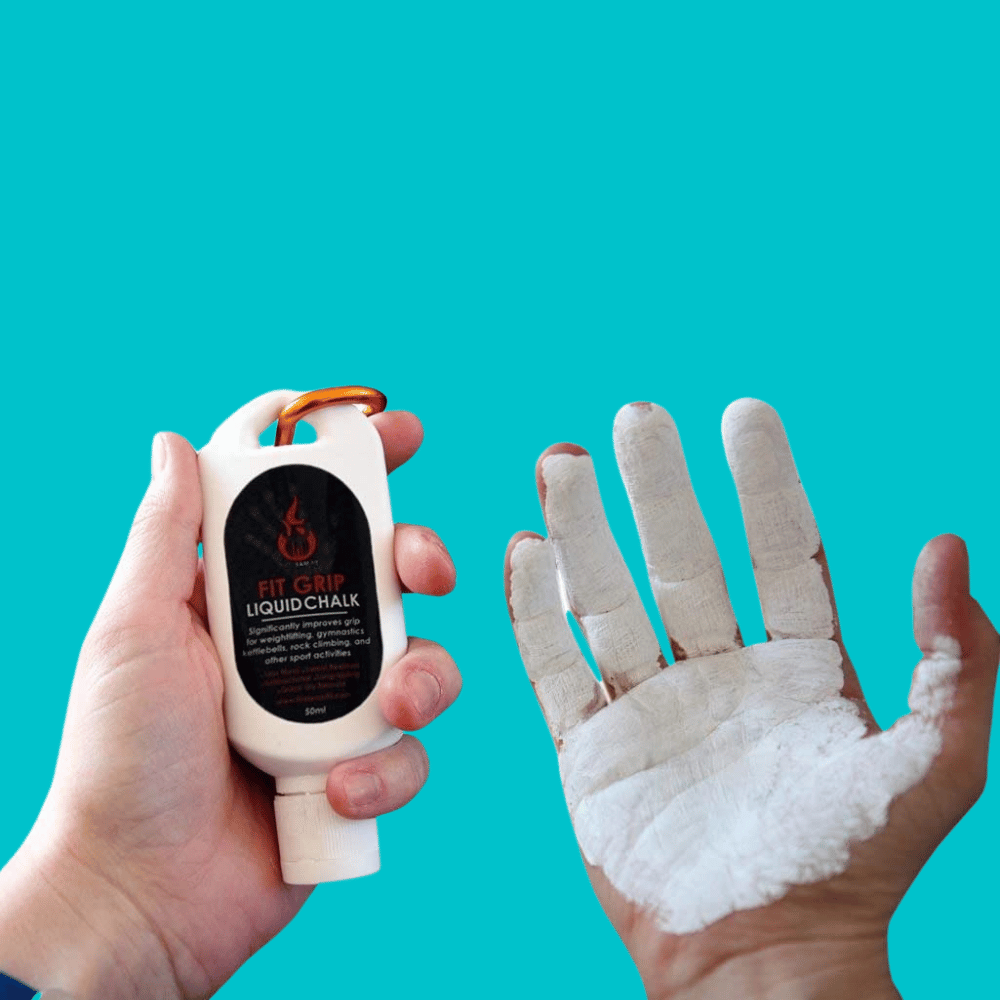
There are two main forms of chalk available: liquid and powdered, also known as regular chalk. Both offer benefits for grip improvement, but each has its own advantages and disadvantages. Liquid chalk, for example, is less messy and dries quickly, but may cause skin irritation due to alcohol content.
Powdered chalk, which is essentially magnesium carbonate, is less irritating and more affordable, but can be messier and less convenient during workouts. Weighing the specific advantages and drawbacks of each chalk type can help determine which is best suited to your needs.
Liquid Chalk Advantages and Disadvantages
Liquid chalk offers several advantages over its powdered counterpart. It is less messy, dries quickly, and lasts longer, making it an ideal choice for those who prefer a cleaner and more convenient chalk option. Liquid chalk is also more transportable, meaning it can easily be carried in a gym bag without the risk of spills or mess.
However, one potential drawback of liquid chalk is that it may cause skin irritation, particularly for those with sensitive skin, due to its alcohol content.
Despite this potential drawback, liquid chalk remains a popular choice for many athletes and gym-goers. Its convenience, ease of use, and reduced mess make it an attractive option for those seeking to improve their grip strength without the hassles associated with powdered chalk.
With Liquid Grip, users can experience the benefits of both liquid chalk and enhanced grip strength.
Powdered Chalk Advantages and Disadvantages
Powdered chalk, on the other hand, is less irritating to the skin and more cost-effective than liquid chalk. This makes it a popular choice for those with sensitive skin or who prefer a more traditional chalk option.
However, powdered chalk does come with its own set of drawbacks, chief among them being its messiness and reduced convenience during workouts. The fine particles of powdered chalk can become airborne and settle on surfaces, resulting in white marks on floors and clothing.
Despite these drawbacks, powdered chalk remains a popular choice for many athletes and gym-goers. Using the correct amount and proper application of powdered chalk can optimize grip strength and minimize mess, thereby maximizing its benefits.
Proper Chalk Application Techniques
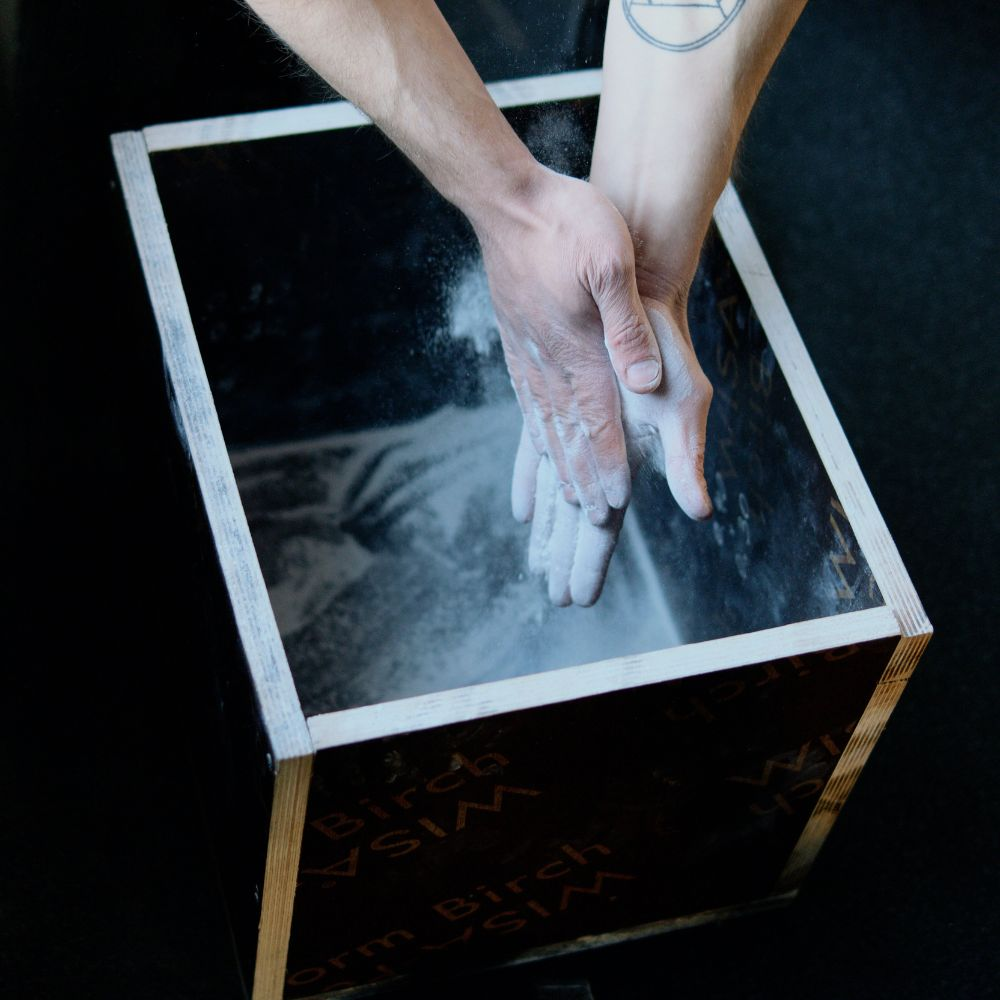
Proper chalk application is key in maximizing its grip-enhancing benefits and minimizing mess. Whether you choose liquid or powdered chalk, following the correct application techniques can ensure that you get the most out of your chalk usage while maintaining a clean and tidy gym environment.
Applying Liquid Chalk
To apply liquid chalk for weightlifting, follow these steps:
- Shake the chalk bottle vigorously.
- Squirt a modest amount of liquid chalk into one hand.
- Rub your hands together to cover your palms, fingers, and the areas where your fingers meet your palms.
- Allow the chalk to dry for approximately 30 seconds.
- Begin your weightlifting session with improved grip and decreased sweat.
By following these simple steps, you can enjoy the benefits of liquid chalk without the mess associated with powdered chalk.
Applying Powdered Chalk
When using powdered chalk, follow these steps:
- Take a generous amount in one hand.
- Place it in the center of the palm of the other hand.
- Rub your hands together to ensure the chalk is evenly distributed.
- Pat your hands together to remove any excess powder.
Before applying chalk, make sure your hands are dry to ensure optimal grip strength and minimize mess. By applying powdered chalk correctly, you can maintain a strong grip without creating unnecessary mess in the gym.
Alternatives to Chalk for Improved Grip
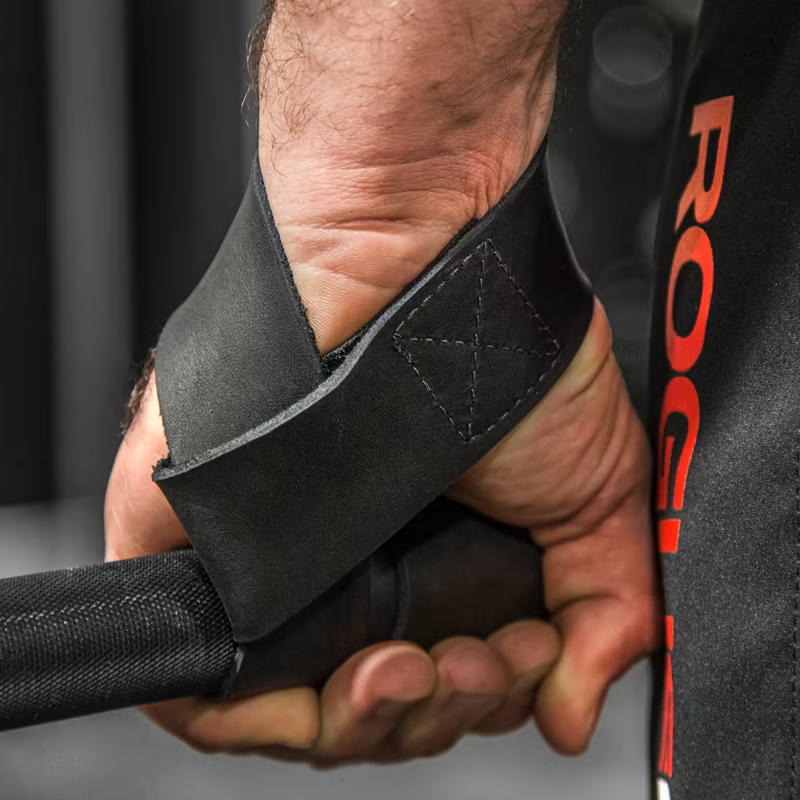
For those preferring an alternative to chalk, numerous other methods are available to improve grip strength. Lifting straps and weightlifting gloves are two options that can provide grip support without the use of chalk. Each has its pros and cons, and understanding the benefits and drawbacks of each can help you determine the best choice for your needs.
Lifting Straps
Lifting straps are designed to assist in maintaining a secure grip on barbells or other weightlifting equipment during heavy lifts, especially when working with heavier weights. They can help prevent grip fatigue and enable greater overall volume during training.
Utilizing lifting straps is a tool to expedite the growth of back strength, as they facilitate an increase in repetitions and prolong one’s grip on the weight. However, excessive use of lifting straps can impede the growth of grip strength, as it may hinder the development of the muscles responsible for gripping and holding onto objects.
While lifting straps can enhance grip during heavy lifts, one should use them wisely to avoid over-reliance. By striking a balance between using lifting straps and training without them, you can enhance your grip strength while still reaping the benefits of this supportive accessory when lifting heavy weights and attempting to lift heavier weights. Incorporating lifting weights into your routine can help you achieve your fitness goals.
Weightlifting Gloves
Weightlifting gloves, also known as weight lifting gloves, provide cushioning and grip support, making them another alternative to chalk for improving grip strength. They can enhance grip by providing improved friction on weights, reducing the risk of slipping, particularly when hands become sweaty during exercise.
However, weightlifting gloves may limit sensory feedback during workouts, as they create a barrier between the hands and the weights, reducing direct contact and tactile sensation.
Despite these potential drawbacks, weightlifting gloves can be a suitable choice for those who prefer an alternative to chalk. They may be particularly useful for lighter exercises or when additional wrist support is necessary.
By understanding the pros and cons of weightlifting gloves, you can make an informed decision about whether they are the right choice for you.
Grip Training Exercises
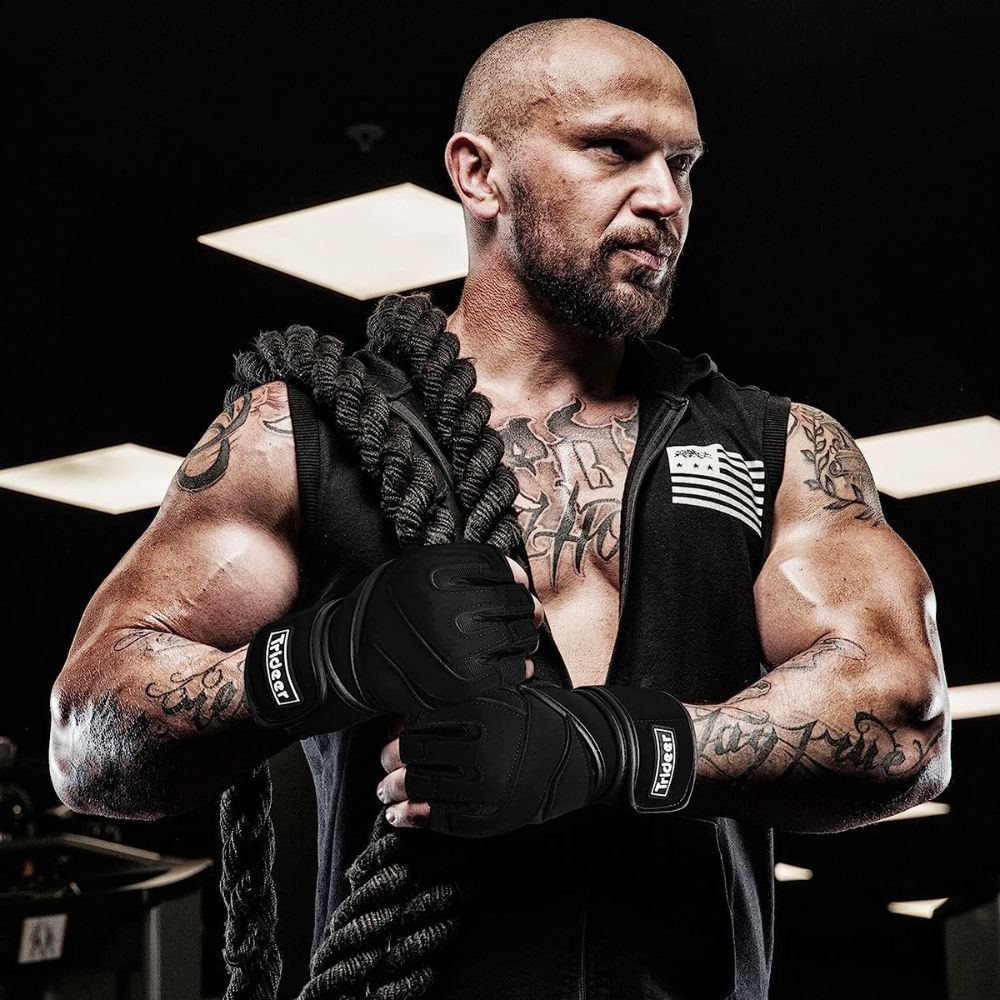
Building grip strength without relying on chalk is possible by incorporating grip training exercises into your routine. Exercises like farmer’s walks and dead hangs can help strengthen the muscles responsible for grip, allowing you to improve your grip strength naturally and without the need for chalk or other grip-enhancing accessories.
Farmer's Walks
Farmer’s walks are a simple yet effective exercise for building grip strength and endurance. The exercise involves carrying heavy weights in each hand while walking, engaging the forearm flexors, obliques, glutes, and trapezius muscles.
By regularly performing farmer’s walks, you can strengthen your grip and increase muscle mass, improving your overall grip strength and performance in various activities.
To execute a Farmer’s Walk with proper form, follow these steps:
- Stand between the handles with your feet hip-width apart.
- Squat down and grasp a weight in each hand.
- Engage your core and pull your shoulder blades down and back.
- Stand up, keeping your shoulders stable and packed.
- Firmly grip the weights.
- Slightly bend your knees.
- Ensure your shoulders are directly over your hips with a neutral head and neck position.
By incorporating farmer’s walks into your training routine, you can build grip strength without relying on chalk.
Dead Hangs and Pull-Ups
Dead hangs and pull-ups are another effective way to build grip strength without the use of chalk. These exercises engage the muscles in the hands and forearms, as well as the upper body muscles, such as the latissimus dorsi and trapezius, improving grip strength over time.
To perform a dead hang, secure an overhead bar, grip the bar with an overhand grip (palms facing away from you), and hang freely by lifting your feet off the step or bench.
For pull-ups, grasp the pull-up bar with your hands shoulder-width apart, palms facing away from you, and pull yourself up until your chin is over the bar. Ensure proper form and engage your core muscles throughout the exercise.
By incorporating dead hangs and pull-ups into your training routine, you can improve your grip strength without the need for chalk, preventing the risk of losing grip during your workouts.
Chalk Etiquette in Gyms
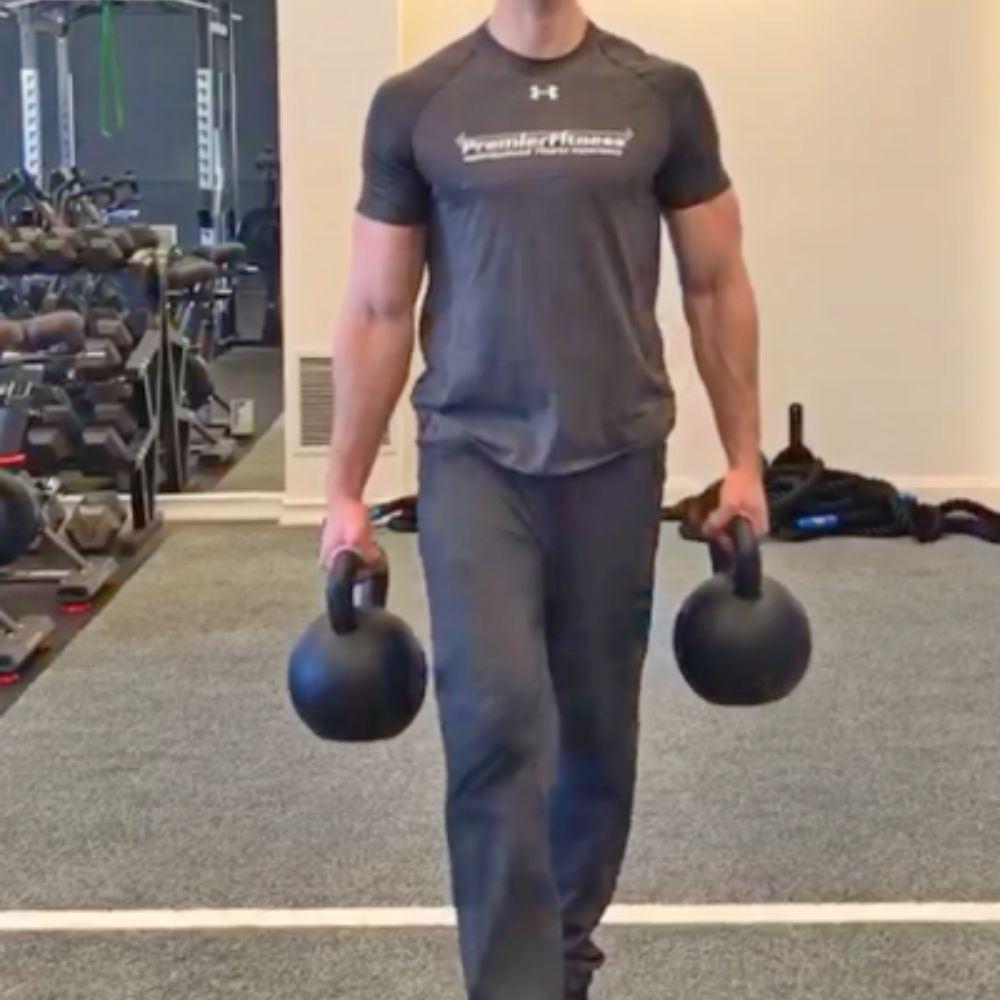
Maintaining proper chalk etiquette in gyms is essential for ensuring a clean and comfortable environment for all gym-goers. Whether you choose to use liquid or powdered chalk, being mindful of gym policies and cleaning up after use can help you enjoy the benefits of chalk while respecting the needs and preferences of others.
Cleaning Up After Use
Responsible gym-goers should ensure to clean up any chalk residue from equipment and floors after use. This not only helps maintain a clean gym environment but also shows respect for other gym members and the facility itself.
Non-acidic cleansing agents, mild dish soap, or rubber floor finish and sealer can be used to safely clean chalk from gym floors. By taking the time to clean up after using chalk, you can enjoy its grip-enhancing benefits while keeping the gym a pleasant space for all.
Respecting Gym Policies
Awareness and adherence to gym policies regarding chalk use are crucial, as some gyms may enforce specific rules or favor liquid chalk over powdered chalk. By adhering to gym policies and respecting the needs and preferences of others, you can enjoy the benefits of chalk while maintaining a positive gym environment for everyone.
Failure to follow gym chalk policies could lead to consequences such as loss of gym privileges or cancellation of membership, so it is essential to abide by the gym’s rules and policies to ensure a safe and sanitary environment for all members.
Summary
In summary, chalk can play a significant role in improving grip strength, but it’s essential to understand its advantages and potential drawbacks. By incorporating grip training exercises, proper chalk application techniques, and respecting gym etiquette, you can maximize the benefits of chalk while minimizing its negative effects.
Whether you choose liquid chalk, powdered chalk, or alternatives like lifting straps and weightlifting gloves, the key to improved grip strength lies in understanding your unique needs and preferences. So, go ahead and chalk up your grip game with confidence, and watch your performance soar.
Frequently Asked Questions
How much does chalk help grip strength?
Chalk may help improve grip strength when lifting heavier weights, but it is not recommended for long-term use since it can have a negative effect on grip strength development.
Is chalk allowed in powerlifting?
Yes, chalk is allowed in powerlifting as it is commonly used on the hands and back for increased grip.
Why gyms don t allow chalk?
Gyms don't allow chalk due to its messiness - it tends to get all over the place, even if most of it stays in the container.
What are the differences between liquid and powdered chalk?
Liquid chalk is more convenient to apply and less messy, making it a great choice for portability, whereas powdered chalk is more cost-effective but can be messier and less convenient.
What are some alternatives to chalk for improving grip?
Lifting straps and weightlifting gloves are great alternatives to chalk for improving grip, as they can provide cushioning and grip support during heavy lifts.
